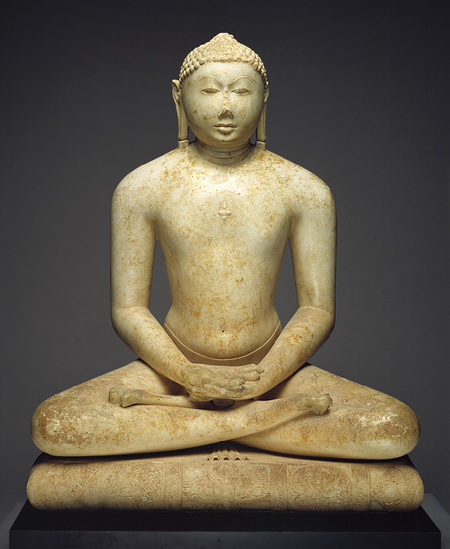
Category: | Jain Art |
Type: | Stone sculpture |
Motif: | Seated Tirthankara |
Name: | Seated Tirthankara |
Site: | Context of discovery unknown |
Union state: | Gujarat, Rajasthan |
Country: | India |
Year: | 1000-1050 CE |
Era: | Solanki period |
Material: | White marble |
Height: | 98,7 cm |
Inscription: | No |
Custody: | Metropolitan Museum of Art, New York |
Purchase: | Florence and Herbert Irving gift, 1992 |
Inventory-No.: | 1992.131 |
Description: | This superb white marble sculpture represents one of the twenty-four tirthankaras ("crossers of the ford") or jinas ("victorious ones", i.e., conquerors of desire) of the Jain religion. There is very little physical difference between representations of seated Buddhas and those of tirthankaras in Indian art: both are considered enlightened beings and display the markings appropriate for such personages. In addition, however, there are a few marks specific to either Buddhas or tirthankaras. The auspicious srivatsa mark on the chest and the lack of the urna (tuft of hair between the eyes) indicates that our image is a tirthankara. Representations of Jain figures follow a very conservative iconographic and artistic tradition. Since the inactive, almost nude figure with passive expression does not lend itself to dramatic sculptural interpretation, the burden of aesthetic success rests on the skillful and sensitive rendition and manipulation of simple forms into a well-proportioned, visually pleasing sculptural unity. |
Citation: | "Seated Jain tirthankara [India] (1992.131)". In Heilbrunn Timeline of Art History. New York: The Metropolitan Museum of Art, 2000–. www.metmuseum.org/toah/works-of-art/1992.131 (October 2006) |
Source: |